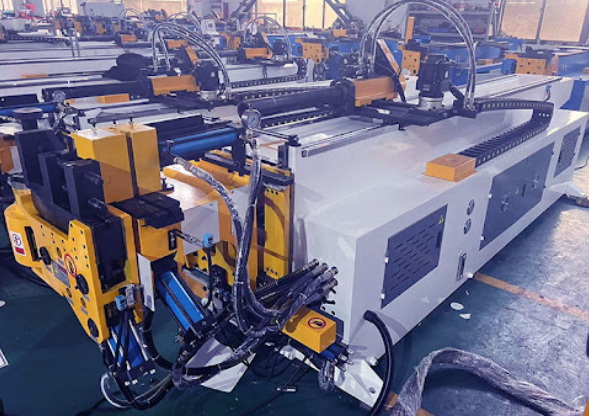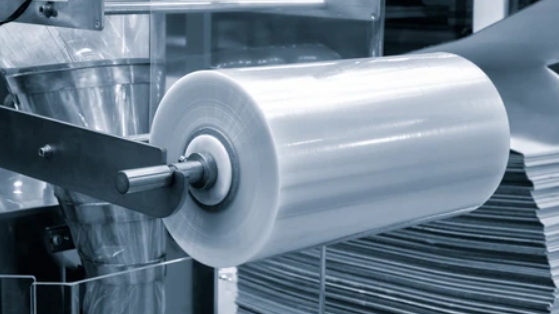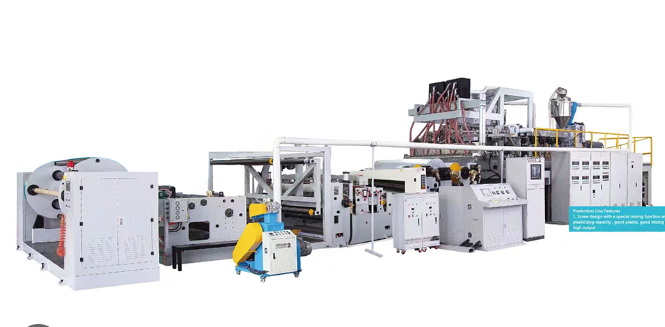Content Menu
● Introduction to HDPE Pipe Extrusion Automatic Machines
>> Key Components of an HDPE Pipe Extrusion Line
● Suitability for Large-Scale Production
>> Advantages of HDPE Pipe Extrusion Automatic Machines
>> Challenges in Large-Scale Production
● Features of Modern HDPE Pipe Extrusion Automatic Machines
>> Advanced Automation and Control Systems
>> Interchangeable Extrusion Heads
>> Energy-Saving Technologies
>> Flexible Production Moulds
● Case Studies and Examples
>> Innovations in HDPE Pipe Extrusion Technology
>> Role of Automation in Enhancing Efficiency
>> Integration of Industry 4.0 Technologies
>> Sustainability in HDPE Pipe Production
>> Future Trends in HDPE Pipe Extrusion
● Conclusion
● FAQs
>> 1. What are the key components of an HDPE pipe extrusion line?
>> 2. How does automation enhance HDPE pipe extrusion?
>> 3. What are the benefits of using a single screw extruder for HDPE pipe production?
>> 4. How do modern HDPE pipe extrusion machines reduce energy consumption?
>> 5. What factors should be considered when selecting an HDPE pipe extrusion machine for large-scale production?
● Citations:
The HDPE pipe extrusion automatic machine has become a crucial tool in the manufacturing industry, particularly for producing high-density polyethylene (HDPE) pipes used in various applications such as water supply, gas distribution, and industrial piping. This article will delve into the capabilities and suitability of these machines for large-scale production, exploring their features, benefits, and challenges.

Introduction to HDPE Pipe Extrusion Automatic Machines
HDPE pipe extrusion machines are designed to continuously manufacture HDPE pipes by melting and shaping HDPE resin pellets. The process involves feeding the pellets into a heated barrel where they are melted and homogenized by a screw mechanism. The molten material is then pushed through a die to form the desired pipe shape. After extrusion, the pipe is cooled and solidified, typically in a water tank or with a spray system, and then cut to size.
Key Components of an HDPE Pipe Extrusion Line
1. Extruder: This is the core of the machine, responsible for melting and homogenizing the HDPE material.
2. Die Head: Shapes the molten HDPE into a pipe.
3. Vacuum Calibration Tank: Ensures the pipe maintains its shape while cooling.
4. Haul-Off Unit: Pulls the pipe at a controlled speed.
5. Cutting Unit: Cuts the pipe into desired lengths.
Suitability for Large-Scale Production
Advantages of HDPE Pipe Extrusion Automatic Machines
1. High Efficiency: These machines are capable of continuous production, making them ideal for large-scale operations. They can produce pipes with consistent quality and dimensions, reducing the need for manual intervention.
2. Automation: Modern HDPE pipe extrusion automatic machines often include advanced automation systems, such as PLC (Programmable Logic Controller) systems, which enhance production efficiency and maintain consistent quality by controlling temperature, pressure, and extrusion rates in real-time.
3. Flexibility: These machines can produce pipes of various diameters and wall thicknesses, making them versatile for different applications.
4. Energy Efficiency: Modern machines incorporate energy-saving technologies, reducing production costs and environmental impact.
Challenges in Large-Scale Production
1. Material Consistency: Maintaining consistent material quality is crucial for producing pipes that meet industry standards. Variations in HDPE resin quality can affect pipe performance.
2. Equipment Maintenance: Regular maintenance is necessary to prevent downtime and ensure continuous production. This includes checking the extruder, die head, and cooling systems.
3. Operational Costs: While these machines are cost-effective in the long run, initial investment and operational costs can be high.
Features of Modern HDPE Pipe Extrusion Automatic Machines
Advanced Automation and Control Systems
Modern machines often feature sophisticated control systems that monitor and adjust production parameters in real-time. This includes laser measurement tools to ensure precise pipe dimensions and smart control systems that optimize production based on process history data[3].
Interchangeable Extrusion Heads
These allow for the production of single- or multiple-layer pipes, enhancing flexibility for different pressure and performance requirements.
Energy-Saving Technologies
Incorporating better insulating materials and energy-conserving mechanisms reduces production costs and environmental impact. Advanced heating systems with precise temperature control and energy-efficient motors with variable frequency drives are common features[2].
Flexible Production Moulds
Allowing for adjustments in pipe dimensions and wall thickness without significant downtime.

Case Studies and Examples
Several companies have successfully implemented HDPE pipe extrusion automatic machines for large-scale production. For instance, Swaraj Extrusion Private Limited offers fully automatic plants with advanced features like three-layer HDPE pipe die heads and servo-enabled haul-off units.
Innovations in HDPE Pipe Extrusion Technology
Recent advancements include the development of high-output extruders with improved screw designs for better plasticization of PE materials, energy-saving features, and faster production speeds[1]. Innovations in die-head designs have also allowed for greater control over pipe dimensions and reduced material waste. Furthermore, integrating automation and digital monitoring systems has enhanced production efficiency, quality control, and operational safety[2].
Role of Automation in Enhancing Efficiency
Automation has become integral in HDPE pipe production, enhancing efficiency, accuracy, and uniformity. Automated systems facilitate production by monitoring and controlling temperature, pressure, and extrusion rate in real-time. For example, these systems guarantee different wall thicknesses by controlling the extrusion rate, which is required for HDPE pipes in compliance with ISO and ASTM standards[3].
Integration of Industry 4.0 Technologies
The adoption of Industry 4.0 technologies, including AI and IoT, is transforming the pipe extrusion industry by enabling smart manufacturing practices. These technologies facilitate real-time monitoring, predictive maintenance, and autonomous operations, thereby enhancing efficiency and reducing downtime[5].
Sustainability in HDPE Pipe Production
There is a growing trend towards using sustainable materials in pipe extrusion. Biodegradable and bio-based plastics are becoming increasingly popular as manufacturers seek to reduce their environmental impact. Advanced extrusion machines are being designed to process these new materials, providing environmentally friendly options for pipe production[5].
Future Trends in HDPE Pipe Extrusion
The future of HDPE pipe extrusion is poised for significant innovations, focusing on sustainability, automation, and intelligent manufacturing solutions. Critical areas of future development include advanced recycling techniques, integration of IoT technologies for predictive maintenance, and ongoing research into new HDPE formulations and composite materials[1].
Conclusion
The HDPE pipe extrusion automatic machine is well-suited for large-scale production due to its efficiency, automation, and flexibility. While challenges exist, such as material consistency and operational costs, these machines offer significant benefits in terms of productivity and cost-effectiveness. By understanding the key components, advantages, and challenges, manufacturers can optimize their use of these machines for successful large-scale operations.

FAQs
1. What are the key components of an HDPE pipe extrusion line?
The key components include the extruder, die head, vacuum calibration tank, haul-off unit, and cutting unit. Each plays a crucial role in the efficient production of HDPE pipes.
2. How does automation enhance HDPE pipe extrusion?
Automation enhances production efficiency by controlling temperature, pressure, and extrusion rates in real-time. It also reduces human error and increases flexibility in production, allowing for higher output while maintaining quality.
3. What are the benefits of using a single screw extruder for HDPE pipe production?
Single screw extruders are cost-effective, easier to operate, and require less maintenance. They are suitable for steady-state operations and ensure efficient melting and homogenization of HDPE material.
4. How do modern HDPE pipe extrusion machines reduce energy consumption?
Modern machines incorporate energy-saving technologies such as better insulating materials and advanced heating systems. These reduce energy consumption while maintaining processing stability.
5. What factors should be considered when selecting an HDPE pipe extrusion machine for large-scale production?
Factors include production capacity, pipe diameter and wall thickness range, material type, operational flexibility, and maintenance requirements. Ensuring the machine meets these criteria is crucial for efficient and quality production.
Citations:
[1] https://jieyatwinscrew.com/blog/hdpe-pipe-extrusion-line/
[2] https://www.polestar-machinery.com/news/latest-trends-in-pe-pipe-extrusion-technology/
[3] https://machine.goldsupplier.com/blog/hdpe-pipe-extrusion-machine/
[4] https://jieyatwinscrew.com/blog/unlock-the-potential-of-hdpe-pipe-extrusion-innovations-and-technologies/
[5] https://www.yjing-extrusion.com/what-is-the-latest-technology-in-pipe-extrusion-equipment.html
[6] https://newtech-pipes.com/hdpe-pipe-technology/
[7] https://www.extrusion-info.com/case-studies/2877
[8] https://jydjx.com/innovations-in-plastic-pipe-extrusion-lines-advancements-in-technology-and-sustainability/
[9] https://www.cognitivemarketresearch.com/pipe-extrusion-lines-market-report
[10] https://www.jwellextrusions.com/products/hdpe-pipe-extrusion-machine/
[11] https://www.sandaleontario.ca/resources/categories/case-studies
[12] https://www.openpr.com/news/3925954/hdpe-pipe-manufacturing-plant-2025-project-report-business
[13] https://changyuemachine.en.made-in-china.com/product/dZlEFhHvkxkW/China-New-Germany-Technology-HDPE-Pipe-Extrusion-Machine.html
[14] https://www.sciencedirect.com/science/article/pii/S2212827116313531
[15] https://www.globenewswire.com/news-release/2025/02/05/3021359/0/en/Plastic-Extrusion-Machine-Market-to-Grow-at-4-7-CAGR-During-2025-2035-Boosting-Global-Industry-to-USD-12-343-2-Million-by-2035-Future-Market-Insights-Inc.html
[16] https://www.extrusion-info.com/videos/1288
[17] https://sinopipefactory.com/blog/everything-you-need-to-know-about-hdpe-pipe-extrusion-line/
[18] https://www.plasticstoday.com/extrusion-pipe-profile/modular-hdpe-pipe-extrusion-system-reduces-logistics-cost-for-infrastructure-projects
[19] https://www.ifanpiping.com/info/hdpe-pipe-fittings-future-development-trends-96104052.html






















